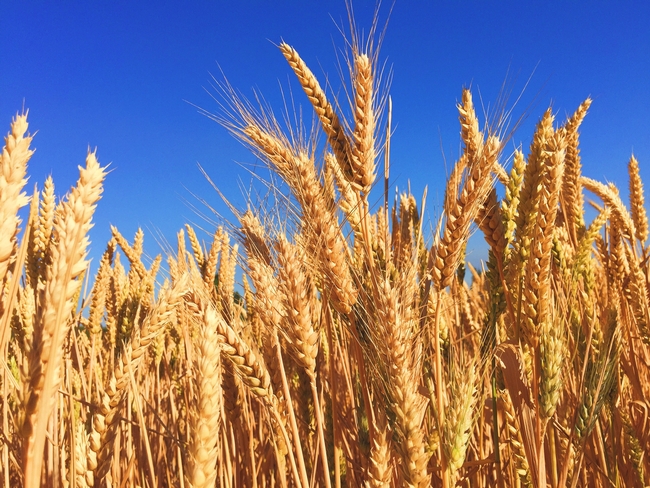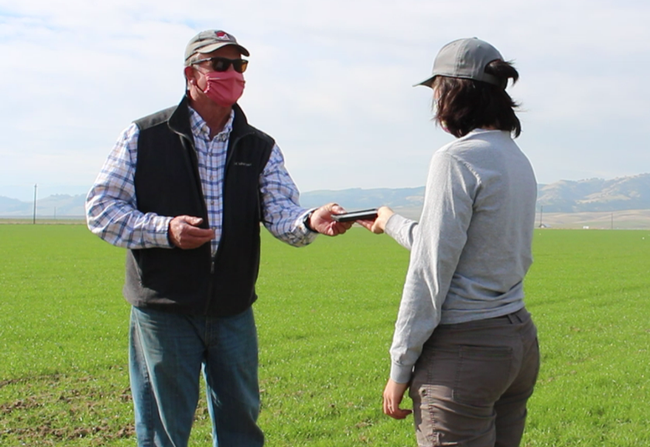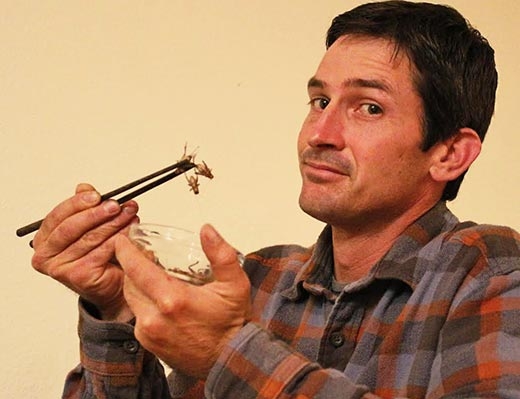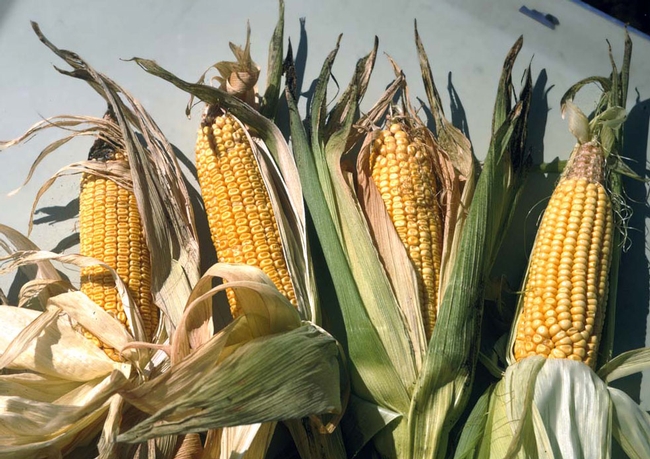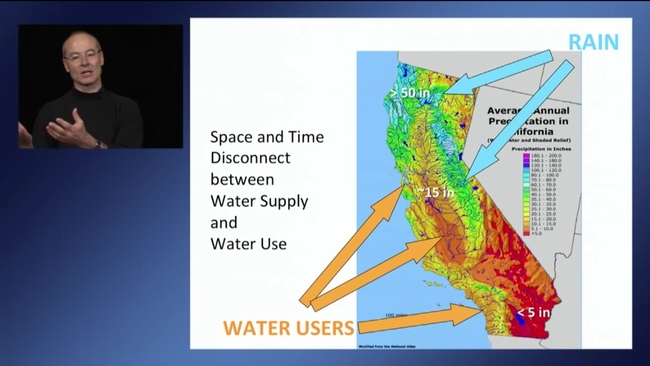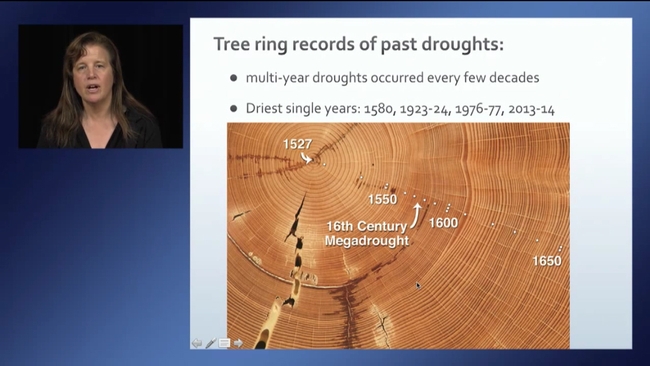Posts Tagged: Mark Lundy
New ‘big data’ tools help California wheat farmers reduce fertilizer guesswork
Growers in California grapple with plenty of climate uncertainty – but a new set of tools can help wheat farmers make crucial fertilizer decisions with more precision and confidence.
An interactive website integrates these tools – developed or adapted by researchers at the University of California, Davis and University of California Cooperative Extension – that provide farmers with recommendations for applying nitrogen fertilizers, specific to their own sites and conditions.
While factoring in those weather variables, the management tool also draws data from two indicators of nitrogen sufficiency or deficiency: the results of a soil nitrate quick test (a simple test previously used in vegetable crop systems along the coast), and comparisons of plant health in the broader field to that in a “nitrogen-rich reference zone” (a practice originally developed in the Midwest).
Using them in tandem, in the context of California wheat growing, is a novel approach. In a Nov. 4 webinar, Lundy will introduce the use of the nitrogen-rich reference zone, a small area in a field where extra fertilizer is added at the beginning of the season.
“This project is a unique example of digital agriculture at work in an applied setting,” he explained. “We are integrating ‘big data' sources like site-specific soil and weather data, as well as satellite, drone and other sensor measurements into an interactive web interface. This allows users to receive straightforward yet highly customized recommendations from somewhat complex agronomic models.”
The team conducted 11 on-farm demonstrations in fields representing a wide range of agroecosystems, including the Sacramento Valley, San Joaquin Valley, Delta region, and Tulelake Basin.
Fritz Durst, a western Yolo County-based grower who participated in one of the case studies, said that the process of gathering the data was “actually pretty simple” and the tool “eliminates much of the guesswork” for managing nitrogen fertilizers.
“This tool is extremely helpful for me to make decisions about the most efficient and cost-effective method for applying nitrogen to my wheat,” Durst said.
In addition to potentially increasing crop productivity and farmer net-income, the tool can benefit the environment by reducing the amount of nitrate leaching from fertilizer applications, according to Lundy.
“It's not only trying to say how much fertilizer to put down, sometimes it's trying to confirm you don't really need any fertilizer,” he said.
More resources and events related to the Nitrogen Fertilizer Management Tool for California Wheat – including demonstration activities – will appear on the UC Small Grains blog.
Can crickets be the new beef?
For the study, published in the journal PLOS One, the researchers raised crickets on five different diets - corn, soy, grain, food waste and crop residue. They measured the crickets' size and how much edible protein they produced.
“I think the sustainability claims on this topic have been overstated given the current state of knowledge,” wrote UC ANR Cooperative Extension agronomy advisor Mark Lundy in an e-mail to Time. “I'm all for exploring alternatives, and I am impressed by the amount of innovation that has sprung up around insect cultivation and cuisine in the last few years. However, I also think we need to be clear-eyed about what the sustainability gains are and aren't, and focus our innovative efforts and limited resources to where they will have the most lasting impact.”
Lundy conducted the research and published the results with horticultural entomologist Michael Parrella, a professor and chair of the UC Davis Department of Entomology and Nematology. The story generated a great deal of news media coverage, including:
The environmental benefits of eating crickets vs. chicken: It's complicated
Brooke Borel, Popular Science, April 22
Humans Are Ready For Protein-Rich Crickets, But Are Crickets Ready For Us?
Rex Macadangdang, Tech Times, April 19
Crickets can't replace Meat in Human Diet: Study
Luis Georg, Perfect Science, April 18
Turns out, crickets may not be the solution to all of our problems
Lindsay Abrams, Salon, April 17
Crickets aren't ready to replace meat
Pat Bailey, Futurity.org, April 17
Crickets aren't the miracle source of protein
Kathy Keatley Garvey, Phys.org, April 16
Crickets Aren't the Superfood They're Cracked Up to Be
Alissa Walker, Gizmodo.com, April 16
Maybe crickets aren't the food of the future, after all
Alexis Madrigal, Fusion.net, April 16
Crickets Alone Will Not Save You, Futurist Foodies Robbie Gonzalez, i09/We Come From the Future, April 20
Crickets Are Not a Free Lunch
Entomology Today, April 15
'More crop per drop' drought strategy touted
Corn silage producers can get 'more crop per drop" with deficit irrigation, however productivity will decline, reported Dennis Pollock in Western Farm Press. Pollack based the story on a seminar at the World Ag Expo earlier this month presented by Mark Lundy, UC Agriculture and Natural Resources Cooperative Extension advisor for Colusa, Sutter and Yuba counties.
Lundy said there are certain times in the crop's development that farmers will not want to stress the corn silage - when tassels and silk are forming. At other times in its development, even if the corn is stressed, the application of more water does not bring a proportionate increase in yield.
The UC ANR advisor suggested farmers choose planting dates, varieties and cultural practices that will maximize irrigation efficiency.
“Look at what you choose to grow and perhaps plant later with a short variety or drought tolerant variety,” he said. “And get weeds under control. They take up water.”
Too wet outside to work? Watch a drought video
Rain has begun falling, but California continues to operate under severe water scarcity from low precipitation over the past three years.
“California will need about 150 percent of normal rainfall this winter to end the drought,” said Doug Parker, director of UC California Institute of Water Resources. “Although the rains have come, we can't afford to let our attention drift away from carefully managing our water supply.”
The UC California Institute of Water Resources, with support from the California Department of Water Resources, has recorded presentations by scientists in the UC system and other organizations on a variety of topics related to water management and drought. “Insights: Water and Drought Online Seminar Series” is accessible by computer or mobile device.
The online seminars enable UC Cooperative Extension and the other scientists to share their knowledge with a larger audience than those who can attend meetings in person, said Daniele Zaccaria, UC Cooperative Extension specialist in agricultural water management in the Department of Land, Air and Water Resources at UC Davis.
“Farmers, landscape professionals, land managers, irrigation consultants, resource managers from water districts and others can view the half-hour video presentations on YouTube whenever it is convenient for them, obtaining science-based information that stems from applied research conducted by several scientists over the last 10 to 15 years,” said Zaccaria, who coordinates the speaker series.
Topics include drought impacts on natural resources, drought preparedness, water management in urban landscapes during a drought and crop management with limited water.
Currently 39 videos addressing drought and water management in different settings are available, and more talks will be added in the coming months. The videos are also being used by Cooperative Extension in other states and have been viewed hundreds of times. “Groundwater and surface water interactions under water shortage,” by Thomas Harter, UC Cooperative Extension specialist in the Department of Land, Air and Water Resources at UC Davis, has been viewed nearly 1,400 times and “Climate change and paleoclimatology: 2013/2014 in perspective” by Lynn Ingram, professor in the Department of Earth and Planetary Science at UC Berkeley, has been more than 800 times.
The following titles have recently been added:
Water resources management in the Pajaro Valley, California
Brian Lockwood, senior hydrologist, Pajaro Valley Water Management Agency
Managing corn under California's drought conditions
Mark Lundy, UC Cooperative Extension advisor in Sutter, Yuba and Glenn counties
Droughts, climate change, and dams: Reconciling a future for California's native inland fishes
Peter Moyle, professor in the Department of Wildlife, Fish & Conservation Biology at UC Davis
Managing landscapes on limited water
Loren Oki, UC Cooperative Extension specialist in the Department of Plant Sciences at UC Davis
Drought - An insidious stress on wildlife
Greg Giusti, UC Cooperative Extension advisor, forests and wildland ecology in Mendocino County
Agricultural water management practices under limited water supply: Lessons from recent droughts
James E. Ayars, agricultural engineer, USDA-ARS
Soil moisture monitoring and utilization during a drought
Dan Munk, UC Cooperative Extension advisor, irrigation, soils and cotton in Fresno County
Land subsidence along the Delta-Mendota Canal and neighboring areas
Michelle Sneed, California Water Science Center, US Geological Survey
How to save water and beautify your landscape ... the sustainable way
Janet Hartin, UC Cooperative Extension advisor, environmental horticulture in San Bernardino and Los Angeles counties
Efficient citrus irrigation
Blake Sanden, UC Cooperative Extension advisor, irrigation and soils in Kern County
Using agroecological practices to enhance the resilience of organic farms to drought
Miguel A. Altieri, professor in the Department of Environmental Science, Policy and Management, UC Berkeley
The drought videos are available at http://ucanr.edu/insights and https://www.youtube.com/UCANR.

